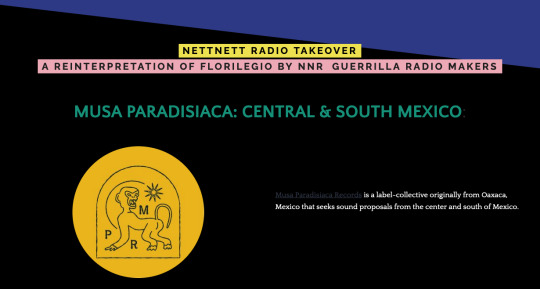#musa paradisiaca
Text
Storytelling olfattivo
Il design olfattivo è un concetto affascinante che comprende tanti aspetti. Un’idea per la composizione olfattiva, un incontro tra packaging, piacevolezza alla vista e sostenibilità, un insieme di ingredienti che stuzzicano la fantasia del profumiere, una storia da raccontare al proprio pubblico di riferimento. Tanti sono gli elementi che compongono un profumo e non sono necessariamente…

View On WordPress
#adjiumi#boa madre#cristian cavagna#dolce qb#elevato al cubo#fragrance collection#libertà olfattiva#musa paradisiaca#niche perfume#parfum de niche#piramide olfattiva#Profumeria Artistica#scent blogger#scent storyteller#scent storytelling
0 notes
Text
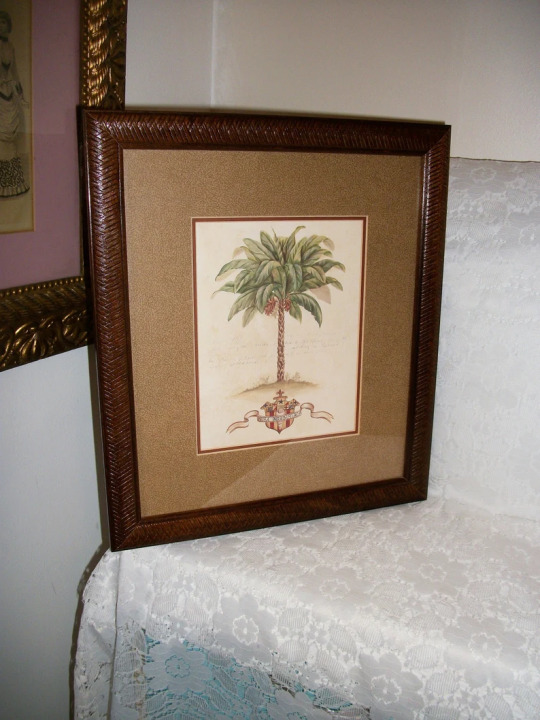
SAlE 50% OFF Vintage Lithograph Biological Study Botanical Art Print Framed Matted Banana Tree Paradisiaca Musa 16" Tall x 14" Just $4.99
#vintage lithograph#vintage art print#banana tree#lithograph#biological study#coat or arms#vintage banana tree#paradisiaca musa#framed matted#art#vintage art#vintage print#sale#etsy sale#vintage sale#sale vintage
0 notes
Text

Berthe Hoola van Nooten (1817-92), Plantain banana (Musa paradisiaca L.), chromolithograph by P. Depannemaeker, c. 1885.
From ''Fleurs, fruits et feuillages choisis de l'ille de Java :peints d'après nature'', 1880.
Wellcome Collection / Europeana
22 notes
·
View notes
Text
Do tell me, dear followers, why is my dear brother so obsessed with the musa paradisiaca, ‘the forbidden fruit of paradise’, or in laymen terms, the banana?
58 notes
·
View notes
Photo

India - Karnataka - Hampi - Banana Plantagen
A banana is an edible fruit, botanically a berry, produced by several kinds of large herbaceous flowering plants in the genus Musa. (In some countries, bananas used for cooking may be called plantains.) The fruit is variable in size, color and firmness, but is usually elongated and curved, with soft flesh rich in starch covered with a rind which may be green, yellow, red, purple, or brown when ripe. The fruits grow in clusters hanging from the top of the plant. Almost all modern edible parthenocarpic (seedless) bananas come from two wild species – Musa acuminata and Musa balbisiana. The scientific names of most cultivated bananas are Musa acuminata, Musa balbisiana, and Musa × paradisiaca for the hybrid Musa acuminata × M. balbisiana, depending on their genomic constitution. The old scientific name Musa sapientum is no longer used.
Musa species are native to tropical Indomalaya and Australia, and are likely to have been first domesticated in Papua New Guinea. They are grown in at least 107 countries, primarily for their fruit, and to a lesser extent to make fiber, banana wine and banana beer and as ornamental plants.
Worldwide, there is no sharp distinction between "bananas" and "plantains". Especially in the Americas and Europe, "banana" usually refers to soft, sweet, dessert bananas, particularly those of the Cavendish group, which are the main exports from banana-growing countries. By contrast, Musa cultivars with firmer, starchier fruit are called "plantains". In other regions, such as Southeast Asia, many more kinds of banana are grown and eaten, so the simple two-fold distinction is not useful and is not made in local languages.
The term "banana" is also used as the common name for the plants which produce the fruit. This can extend to other members of the genus Musa like the scarlet banana (Musa coccinea), pink banana (Musa velutina) and the Fe'i bananas. It can also refer to members of the genus Ensete, like the snow banana (Ensete glaucum) and the economically important false banana (Ensete ventricosum). Both genera are classified under the banana family, Musaceae.
46 notes
·
View notes
Note
what is a banana?
A banana is an elongated, edible fruit – botanically a berry[1][2] – produced by several kinds of large herbaceousflowering plants in the genusMusa.[3] In some countries, bananas used for cooking may be called "plantains", distinguishing them from dessert bananas. The fruit is variable in size, color, and firmness, but is usually elongated and curved, with soft flesh rich in starch covered with a rind, which may be green, yellow, red, purple, or brown when ripe. The fruits grow upward in clusters near the top of the plant. Almost all modern edible seedless (parthenocarp) bananas come from two wild species – Musa acuminata and Musa balbisiana. The scientific names of most cultivated bananas are Musa acuminata, Musa balbisiana, and Musa × paradisiaca for the hybrid Musa acuminata × M. balbisiana, depending on their genomic constitution. The old scientific name for this hybrid, Musa sapientum, is no longer used.
2 notes
·
View notes
Note

A banana is an elongated, edible fruit – botanically a berry[1][2] – produced by several kinds of large herbaceous flowering plants in the genus Musa.[3] In some countries, bananas used for cooking may be called "plantains", distinguishing them from dessert bananas. The fruit is variable in size, color, and firmness, but is usually elongated and curved, with soft flesh rich in starch covered with a rind, which may be green, yellow, red, purple, or brown when ripe. The fruits grow upward in clusters near the top of the plant. Almost all modern edible seedless (parthenocarp) bananas come from two wild species – Musa acuminata and Musa balbisiana. The scientific names of most cultivated bananas are Musa acuminata, Musa balbisiana, and Musa × paradisiaca for the hybrid Musa acuminata × M. balbisiana, depending on their genomic constitution. The old scientific name for this hybrid, Musa sapientum, is no longer used.
Musa species are native to tropical Indomalaya and Australia, and are likely to have been first domesticated in Papua New Guinea.[4][5] They are grown in 135 countries,[6] primarily for their fruit, and to a lesser extent to make fiber, banana wine, and banana beer, and as ornamental plants. The world's largest producers of bananas in 2017 were India and China, which together accounted for approximately 38% of total production.[7]
Worldwide, there is no sharp distinction between "bananas" and "plantains". Especially in the Americas and Europe, "banana" usually refers to soft, sweet, dessert bananas, particularly those of the Cavendish group, which are the main exports from banana-growing countries. By contrast, Musa cultivars with firmer, starchier fruit are called "plantains". In other regions, such as Southeast Asia, many more kinds of banana are grown and eaten, so the binary distinction is not as useful and is not made in local languages.
The term "banana" is also used as the common name for the plants that produce the fruit.[3] This can extend to other members of the genus Musa, such as the scarlet banana (Musa coccinea), the pink banana (Musa velutina), and the Fe'i bananas. It can also refer to members of the genus Ensete, such as the snow banana (Ensete glaucum) and the economically important false banana (Ensete ventricosum). Both genera are in the banana family, Musaceae.
The banana plant is the largest herbaceous flowering plant.[8] All the above-ground parts of a banana plant grow from a structure usually called a "corm".[9] Plants are normally tall and fairly sturdy with a treelike appearance, but what appears to be a trunk is actually a "false stem" or pseudostem. Bananas grow in a wide variety of soils, as long as the soil is at least 60 centimetres (2.0 ft) deep, has good drainage and is not compacted.[10] Banana plants are among the fastest growing of all plants, with daily surface growth rates recorded of 1.4 square metres (15 sq ft) to 1.6 square metres (17 sq ft).[11][12]
The leaves of banana plants are composed of a stalk (petiole) and a blade (lamina). The base of the petiole widens to form a sheath; the tightly packed sheaths make up the pseudostem, which is all that supports the plant. The edges of the sheath meet when it is first produced, making it tubular. As new growth occurs in the centre of the pseudostem the edges are forced apart.[13] Cultivated banana plants vary in height depending on the variety and growing conditions. Most are around 5 m (16 ft) tall, with a range from 'Dwarf Cavendish' plants at around 3 m (10 ft) to 'Gros Michel' at 7 m (23 ft) or more.[14][15] Leaves are spirally arranged and may grow 2.7 metres (8.9 ft) long and 60 cm (2.0 ft) wide.[1] They are easily torn by the wind, resulting in the familiar frond look.[16] When a banana plant is mature, the corm stops producing new leaves and begins to form a flower spike or inflorescence. A stem develops which grows up inside the pseudostem, carrying the immature inflorescence until eventually it emerges at the top.[17] Each pseudostem normally produces a single inflorescence, also known as the "banana heart". (More are sometimes produced; an exceptional plant in the Philippines produced five.[18]) After fruiting, the pseudostem dies, but offshoots will normally have developed from the base, so that the plant as a whole is perennial. In the plantation system of cultivation, only one of the offshoots will be allowed to develop in order to maintain spacing.[19] The inflorescence contains many bracts (sometimes incorrectly referred to as petals) between rows of flowers. The female flowers (which can develop into fruit) appear in rows further up the stem (closer to the leaves) from the rows of male flowers. The ovary is inferior, meaning that the tiny petals and other flower parts appear at the tip of the ovary.[20]
The banana fruits develop from the banana heart, in a large hanging cluster, made up of tiers (called "hands"), with up to 20 fruit to a tier. The hanging cluster is known as a bunch, comprising 3–20 tiers, or commercially as a "banana stem", and can weigh 30–50 kilograms (66–110 lb). Individual banana fruits (commonly known as a banana or "finger") average 125 grams (4+1⁄2 oz), of which approximately 75% is water and 25% dry matter (nutrient table, lower right).
The fruit has been described as a "leathery berry".[21] There is a protective outer layer (a peel or skin) with numerous long, thin strings (the phloem bundles), which run lengthwise between the skin and the edible inner portion. The inner part of the common yellow dessert variety can be split lengthwise into three sections that correspond to the inner portions of the three carpels by manually deforming the unopened fruit.[22] In cultivated varieties, the seeds are diminished nearly to non-existence; their remnants are tiny black specks in the interior of the fruit.[23]
The end of the fruit opposite the stem contains a small tip distinct in texture, and often darker in color. Often misunderstood to be some type of seed or excretory vein, it is actually just the remnants from whence the banana fruit was a banana flower.[24]
As with all living things on earth, potassium-containing bananas emit radioactivity at low levels occurring naturally from potassium-40 (40K or K-40),[25] which is one of several isotopes of potassium.[26][27] The banana equivalent dose of radiation was developed in 1995 as a simple teaching-tool to educate the public about the natural, small amount of K-40 radiation occurring in every human and in common foods.[28][29]
The K-40 in a banana emits about 15 becquerels or 0.1 microsieverts (units of radioactivity exposure),[30] an amount that does not add to the total body radiation dose when a banana is consumed.[25][29] By comparison, the normal radiation exposure of an average person over one day is 10 microsieverts, a commercial flight across the United States exposes a person to 40 microsieverts, and the total yearly radiation exposure from the K-40 sources in a person's body is about 390 microsieverts.[30][better source needed]
The word "banana" is thought to be of West African origin, possibly from the Wolof word banaana, and passed into English via Spanish or Portuguese.[31]
The genus Musa was created by Carl Linnaeus in 1753.[32] The name may be derived from Antonius Musa, physician to the Emperor Augustus, or Linnaeus may have adapted the Arabic word for banana, mauz.[33] According to Roger Blench, the ultimate origin of musa is in the Trans–New Guinea languages, whence they were borrowed into the Austronesian languages and across Asia, via the Dravidian languages of India, into Arabic as a Wanderwort.[34]
Musa is the type genus in the family Musaceae. The APG III system assigns Musaceae to the order Zingiberales, part of the commelinid clade of the monocotyledonous flowering plants. Some 70 species of Musa were recognized by the World Checklist of Selected Plant Families as of January 2013;[32] several produce edible fruit, while others are cultivated as ornamentals.[35]
The classification of cultivated bananas has long been a problematic issue for taxonomists. Linnaeus originally placed bananas into two species based only on their uses as food: Musa sapientum for dessert bananas and Musa paradisiaca for plantains. More species names were added, but this approach proved to be inadequate for the number of cultivars in the primary center of diversity of the genus, Southeast Asia. Many of these cultivars were given names that were later discovered to be synonyms.[36]
In a series of papers published from 1947 onwards, Ernest Cheesman showed that Linnaeus's Musa sapientum and Musa paradisiaca were cultivars and descendants of two wild seed-producing species, Musa acuminata and Musa balbisiana, both first described by Luigi Aloysius Colla.[37] Cheesman recommended the abolition of Linnaeus's species in favor of reclassifying bananas according to three morphologically distinct groups of cultivars – those primarily exhibiting the botanical characteristics of Musa balbisiana, those primarily exhibiting the botanical characteristics of Musa acuminata, and those with characteristics of both.[36] Researchers Norman Simmonds and Ken Shepherd proposed a genome-based nomenclature system in 1955. This system eliminated almost all the difficulties and inconsistencies of the earlier classification of bananas based on assigning scientific names to cultivated varieties. Despite this, the original names are still recognized by some authorities, leading to confusion.[37][38]
The accepted scientific names for most groups of cultivated bananas are Musa acuminata Colla and Musa balbisiana Colla for the ancestral species, and Musa × paradisiaca L. for the hybrid M. acuminata × M. balbisiana.[39]
Synonyms of M. × paradisiaca include
many subspecific and varietal names of M. × paradisiaca, including M. p. subsp. sapientum (L.) Kuntze
Musa × dacca Horan.
Musa × sapidisiaca K.C.Jacob, nom. superfl.
Musa × sapientum L., and many of its varietal names, including M. × sapientum var. paradisiaca (L.) Baker, nom. illeg.
Generally, modern classifications of banana cultivars follow Simmonds and Shepherd's system. Cultivars are placed in groups based on the number of chromosomes they have and which species they are derived from. Thus the Latundan banana is placed in the AAB Group, showing that it is a triploid derived from both M. acuminata (A) and M. balbisiana (B). For a list of the cultivars classified under this system, see "List of banana cultivars".
In 2012, a team of scientists announced they had achieved a draft sequence of the genome of Musa acuminata.[40]
4 notes
·
View notes
Text
Chuối tiêu- thức ăn và vị thuốc quý
Chuối tiêu- thức ăn và vị thuốc quý
Chuối tiêu, còn gọi là chuối tiêu ngựa (Musa paradisiaca L.), là một loại cây chuối thường được trồng trong khu vực nhiệt đới và là một nguồn thực phẩm quan trọng trong một số nền văn hóa. Nó có sự kết hợp giữa vai trò thức ăn và một số ứng dụng trong y học dân gian, nhưng cần lưu ý rằng các tác dụng y học vẫn chưa được khoa học chứng minh một cách rõ ràng.
Thức ăn:
Quả chuối: Chuối tiêu có quả ngọt, béo và thơm ngon, cung cấp nhiều dưỡng chất như kali, vitamin C, vitamin B6 và chất xơ. Chúng thường được ăn trực tiếp sau khi chín hoặc được sử dụng để làm các món ăn như chuối nướng, chuối chiên, bánh chuối, và chuối hấp.
Lá chuối: Lá chuối cũng có thể được sử dụng trong nấu ăn. Ở một số nền văn hóa, lá chuối được sử dụng để cuốn thực phẩm, giữ thức ăn mềm mịn và thơm ngon.
Vị thuốc quý: Một số phần của cây chuối tiêu, chẳng hạn như lá và rễ, cũng được sử dụng trong y học dân gian và truyền thống cho mục đích điều trị nhất định. Tuy nhiên, cần lưu ý rằng chúng không thể thay thế cho các loại thuốc được xác định và kiểm định bởi y học hiện đại. Dưới đây là một số ứng dụng tiềm năng:
Lá chuối: Lá chuối có thể được sử dụng trong một số vùng để chữa tiêu chảy và vấn đề tiêu hóa khác.
Rễ chuối: Rễ chuối có khả năng chứa các hợp chất có tính chất kháng vi khuẩn và chống viêm nhiễm. Trong một số trường hợp, rễ chuối có thể được sử dụng để điều trị các vấn đề về sức khỏe, nhưng việc sử dụng này nên được hướng dẫn bởi một chuyên gia y học.
Lưu ý rằng việc sử dụng chuối tiêu cho mục đích y học cần phải được thực hiện dưới sự giám sát và hướng dẫn của các chuyên gia y học hoặc dược sĩ, và không nên tự điều trị bằng cây chuối mà không có sự tư vấn y tế chính thống.
1 note
·
View note
Text
Toreh Prestasi di Kancah Internasional, SMPN 6 Denpasar Raih Emas dan Perak IID
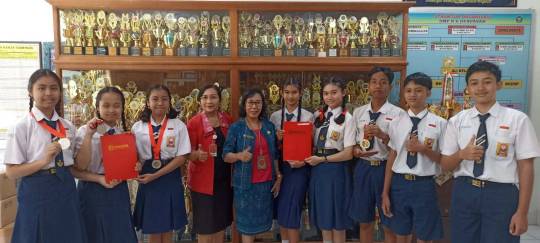
BALIPORTALNEWS.COM, DENPASAR - Siswa Sekolah Menengah Pertama Negeri (SMPN) 6 Denpasar kembali menorehkan prestasi di kancah internasional. Setidaknya, ada delapan siswa dari sekolah yang berhasil menyabet medali emas dan perak pada ajang Indonesia Inventors Day (IID), diselenggarakan oleh INNOPA (Indonesia Invention and Innovation Promotion Associatian).
Kegiatan tersebut diikuti oleh 33 negara di antaranya, Indonesia, Malaysia, Thailand, Rusia, India, UEA, Taiwan, Korea Selatan dengan 350 project, dibagi dalam tiga kategori lomba masing-masing, STEM, IYIA dan WINTEX.
Kepala SMPN 6 Denpasar, Dra. Ni Nyoman Suci, M.Pd., menjelaskan, sekolahnya menurunkan dua tim. Tim 1 membawa inovasi bertajuk ‘Ecspoon: Innovation From Mangosteen Peel (Garcinia mangostana) as An Eco-Friendly and Healthy Edible Spoon’.
"Terima kasih atas dukungan dan motivasi dari Kadisdikpora Kota Denpasar. Saya berharap prestasi ini terus memotivasi siswa yang lain untuk melahirkan karya-karya nyata sehingga bisa meraih juara di berbagai bidang perlombaan," jelasnya, Senin (2/10/2023).
Tim 1 berhasil meraih medali emas, beranggotakan I Putu Dimas Pramudya Sastra, I Gede Evan Praditya Uthama, I Made Wiranatha Kusuma, Ni Putu Kiara Praba Elysia dan Ni Made Diar Laksmiati K berhasil meraih medali emas dalam kategori STEM Science.
Sementara tim 2 terdiri dari Shira Damita Zulkifli, I Gusti Ayu Natasha Adisty Suryana dan Ni Made Ayundia Shasmita meraih medali perak.
Tim 2 menampilkan inovasi ‘Niphotafer: Inovasi Pupuk Alami yang Memanfaatkan Limbah Kulit Pisang (Musa paradisiaca) yang Dikombinasikan dengan Limbah Kulit Ubi Jalar (Ipomoea batatas) dan Daun Lamtoro (Leucaena leucocephala)’.
Putu Dimas Pramudya Sastra Cs, dalam penelitiannya membuat sebuah produk ramah lingkungan yang dapat mensubstitusikan sendok plastik sekaligus memanfaatkan limbah organik kulit manggis, yaitu sendok edible yang disebut ‘Ecspoon’ yang terbuat dari bahan utama kulit manggis (Garcinia mangostana) yang dikombinasikan dengan tepung terigu dan maizena.
Adapun karakteristik dari sendok edible yang ramah lingkungan adalah permukaan yang halus, serta rasa yang netral. Dengan mengganti penggunaan sendok plastik menjadi sendok edible diharapkan dapat berkontribusi mengurangi limbah plastik dan menjaga kelestarian lingkungan.
Sementara tim Shira Damita Zulkifli Cs, dari hasil penelitian membuktikan bahwa penggunaan Niphotafer (Nitrogen Fosfor Potassium Fertilizer) dapat membantu pertumbuhan tanaman dengan baik.
Selain membantu pertumbuhan tanaman, Niphotafer juga membantu mengurangi limbah kulit pisang (Musa paradisiaca) dan kulit ubi jalar (Ipomoea batatas).
Kulit pisang (Musa paradisiaca) mengandung nitrogen, phospor, kalium dan magnesium, kulit ubi jalar (Ipomoea batatas) memiliki kandungan kalium, sedangkan daun lamtoro mengandung fosfor, kalsium, besi.
Kasek Nyoman Suci mengaku bangga dengan prestasi para siswa yang telah mengharumkan nama SMPN 6 Denpasar di ajang Internasional.
Nyoman Suci memberikan selamat untuk siswa dan guru baik guru pendamping maupun guru pembimbing, I Gusti Ayu Dewi Yunita Handayani.
Sementara itu, Kadisdikpora Kota Denpasar, AA Gede Wiratama, mengapresiasi prestasi yang diraih siswa SMPN 6 Denpasar di tingkat internasional. Ia berharap inovator-inovator muda ini tidak berhenti di sini dan diharapkan ke depan dapat melahirkan ide-ide yang bermanfaat bagi masyarakat Denpasar, bangsa Indonesia bahkan dunia.
“Semoga prestasi ini lebih memacu siswa dalam belajar untuk mempersiapkan diri menuju era Society 5.0,” pungkas Wiratama.
Menurut Wiratama, keberhasilan para siswa Denpasar meraih medali emas di ajang Indonesia Inventors Day telah membuktikan bahwa pendidikan Denpasar telah mampu bersaing di level internasional. (bpn)
Read the full article
#Emas#IID#Indonesia InventorsDay#IndonesiaInventionandInnovationPromotionAssociatian#INNOPA#Perak#SMPN6Denpasar
0 notes
Text
Climate Change and Fusarium Wilt in Banana Plants (Musa Paradisiaca L.).
Fusarium wilt is an important disease of many types of bananas and one of the very common diseases that causes destruction in banana plants in tropical and subtropical regions. Fusarium wilt is caused by the fungus Fusarium oxysporum f.sp. cubense (FOC). The solution from the results of statistical analysis is known that the use of banana seeds from tissue culture alone can reduce the incidence…

View On WordPress
0 notes
Text
香蕉
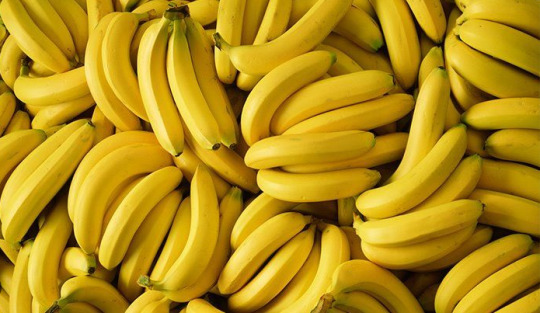
香蕉是一种细长的可食用水果——植物学上是一种浆果[1][2]——由芭蕉属的几种大型草本开花植物生产。 在一些国家,用于烹饪的香蕉可能被称为“车前草”,以区别于甜点香蕉。 果实的大小、颜色和硬度各不相同,但通常是细长和弯曲的,富含淀粉的柔软果肉覆盖着外皮,成熟时可能呈绿色、黄色、红色、紫色或棕色。 果实在植物顶部附近成簇向上生长。 几乎所有现代可食用无核(单性果皮)香蕉都来自两种野生品种——Musa acuminata 和 Musa balbisiana。 大多数栽培香蕉的学名是 Musa acuminata、Musa balbisiana 和 Musa × paradisiaca(杂交 Musa acuminata × M. balbisiana),具体取决于它们的基因组构成。 这种杂交种的旧学名 Musa sapientum 已不再使用。
芭蕉原产于热带印多马拉亚和澳大利亚,很可能首先在新几内亚被驯化。 它们在 135 个国家/地区种植,主要用于生产水果,并在较小程度上用于制造纤维、香蕉酒和香蕉啤酒,以及作为观赏植物。 2017 年世界上最大的香蕉生产国是印度和中国,合��约占总产量的 38%。
在世界范围内,“香蕉”和“车前草”之间没有明显的区别。 尤其是在美洲和欧洲,“香蕉”通常是指柔软、甜美的甜点香蕉,特别是卡文迪什集团的香蕉,它们是香蕉种植国的主要出口产品。 在美国,截至 2019 年,按磅数计算,这些香蕉是消费量最大的新鲜水果。 [8] 相比之下,果实更结实、淀粉含量更高的芭蕉品种被称为“车前草”。 在东南亚等其他地区,种植和食用的香蕉种类更多,因此二元区分没有那么有用,也没有用当地语言表示。
术语“香蕉”也用作生产这种水果的植物的通用名称。 这可以扩展到芭蕉属的其他成员,例如猩红色香蕉 (Musa coccinea)、粉红色香蕉 (Musa velutina) 和 Fe'i 香蕉。 它也可以指 Ensete 属的成员,例如雪蕉 (Ensete glaucum) 和经济上重要的假香蕉 (Ensete ventricosum)。 这两个属都属于芭蕉科香蕉科。
稳定更新
1 note
·
View note
Text
BioFest- Indian festivals and Biodiversity Part II
In the second category Indian BioFest we can include those festivals/rituals which are indirectly promoting conservation of biodiversity, especially plants, due to demands of particular plants during the ritual or festive process, for example let us take the example of common ritual of yagna or havan happening during various festivals in India, during the havan many plants are required to be used in the process which are necessary to complete it. Sometimes these plants are not popular in modern society in daily means but their need during the ritual made it necessary to conserve them for accomplishment of the ritual.

Minor BioFest mostly includes Indian rituals due to their long process and offering process of different natural elements. Ingredients that make part of a festival or celebration are naturally protected because they serve a purpose and have ritual significance. Since Yagna or Havan is unseparated part of most of the Indian communities and there is always a yagna or havan happening in any part of the country, so it is the most important BioFest to be included on first place in this list,
Some plants which are used in the ritual of Yagna or Havan are: –
Bael (Aegle marmelos)
Neem (Azadirachta indica)
Palash (Butea monosperma)
Deodar (Cedrus deodara)
Gular (Ficus racemosa)
Peepal (Ficus religiosa)
Ashwagandha (Withania Somnifera)
Bramhi (Bacopa monnieri)
Mulethi (Glycyrrhiza glabra)
Baheda (Terminalia Bellirica), etc.
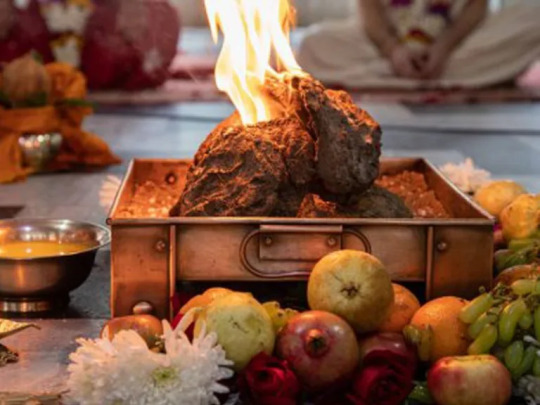
As we can see that most of these plants are not used in food market but their need in the society and rituals has made them compulsory to be conserve.
The most renowned festival in second category is Chhath Festival. In India and Nepal, Chhath Puja is an important festival that helps to safeguard several native fruit species, especially the pomelo, which is part of the offerings made by women to the Sun God. The ritual of Chhath is largely observed by women, who over 3 days, clean and purify their homes, fast for 36 hours with family members, and prepare a special dish with rice and jaggery (cane sugar) using dried twigs of mango as fuelwood. On the 4th day, a puja (prayer ritual) is performed near a river or water body. The puja includes offerings made of a diverse variety of fruits, flowers, spices and root vegetables. Women arrange these offerings carefully and recite traditional songs to reiterate the importance of conserving water and the environment. Of all the ingredients used, pomelo, is the essential fruit that makes this ritual complete. A large citrus fruit native to South Asia, the festival is a strong motivation for families in Bihar to plant a pomelo tree in their homegarden. In fact, many of the fruits, herbs and spices used in the festival such as guava, banana, sugarcane, turmeric and ginger, are all sourced from homegardens, for example in Bihar where the festival has great importance, the average homegarden boasts an average of 6-8 fruit trees, up to 16 in some cases.

For most rural households, homegardens provide their families with supplementary food, fodder, fuelwood, medicine and other socio-cultural needs that might arise throughout the year. They act as a safety net, ensuring year-round income in case of crop failure. From a researcher’s point of view, these gardens double as in situ conservation sites for many unique genetic resources for food and agriculture. These fruits, roots and spices not only benefit the household directly and improve their living space, but contribute to a wider pool of available genetic resources for the community and future generations. Most of the fruits used during Chhath are:-
Mango (Mangifera indica)
Lemon (Citrus limon)
Sapota (Achras zapota)
Pomelo (Citrus grandis)
Jackfruit (Artocarpus integrifol)
Monkey Jack (Jackfruit) (Artocarpus lakoocha)
Papaya (Carica papaya)
Sugar Apple (Annona squamosa)
Banana(Musa paradisiaca)
Custard Apple (Annona reticulata)
Pomegranate (Punica granatum)
Peach (Prunus persica)
Jamun (Syzygium cumini)
Indian gooseberry (Emblica officinalis)
Lychee (Litchi chinensis)
Guava (Psidium guajava)
The plants grown in homegardens are not static, but rather provide opportunities for experimentation and creativity. Homegarden owners often attempt new experiments such as introducting new varieties, planting in different seasons and growing different companion mixtures to see how that might affect productivity.
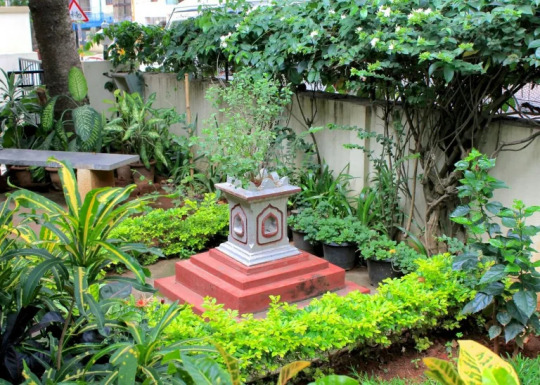
Another similar type of festival is Harelaa of Uttarakhand and Himachal Pradesh state which is basically a festival related to agriculture but its whole long process makes it best suit for biodiversity conservation. Harelaa is celebrated three times in a year during the sowing seasons in Uttarakhand and Himachal. During the occasion family members sow 5 types of agricultural plants in a small container (which is made of leaves or bamboo) containing the soil of their cropland.
To start the process, one has to take out soil from rat’s burrows only as it is believed that the rat’s burrow contains all types of soil of the field due to its movement in the cropland. We can clearly see that where rats are believed to be the enemy of farmers and a pest in agricultural sector, this festival shows how even a rat can be beneficial for one. As a rat moves in different croplands in search of food it transfers the soil of that land in the burrow making it easier to get the mixture of soils of different croplands.
After that the soil is dried and then transferred to a container made of leaves or bamboo. Then seeds of 5 plants are sowed in it which include wheat, corn, mustard, horse gram, and barley. After 9-11 days plants are offered to deity – then – family members – then – all pets or domesticated animals and then to the nearby birds of the area or house. In the last the food is offered to cows and crows and then is distributed among family members to eat.
This festival act as an efficient way to make the children emotionally attach to the nature and its components. The festival supports plantation and biodiversity conservation and can be a good translator to spread green message of conservation.

There are many rituals or festivals that can be put in this list like Badhaan Pujan, and Peepal Pujan of Uttarakhand, Vyanjan Ekadashi in Odisha, Tulsi Pujan in North India etc. Knowledge of these BioFests can be beneficial for governments if they want to preserve biodiversity and culture in an integrated manner. There are also some modern BioFest present in India like Hornbill Festival of Nagaland, Konkan Fruit Festival of Goa, Hakki Habba Bird Festival of Karnataka, etc but these are more conservation oriented with less to no relation with any special ritual or cultural identity, so the Major and minor BioFest can surely provide a Bio-cultural opportunity to make biodiversity conservation an emotional part od communities.
#conservation#biodiversity#environment#research#people#future#culture#biofest#ecology#environmentind#indenvironment#intangibleculturalheritage#majorbiofest#wildlife
0 notes
Text
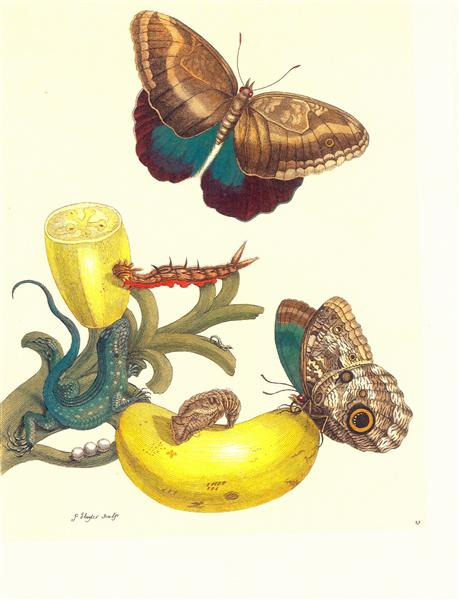
Plate #23- Musa paradisiaca, Caligo teucer and Cnemidophorus lemniscatus
Maria Sibylla Merian
Fecha: 1705
Estilo: Naturalismo
Género: pintura de animales
Localización: Bowdoin College Museum of Art, Brunswick, ME, US
1 note
·
View note
Photo

Musa x paradisiaca attempt
1 note
·
View note
